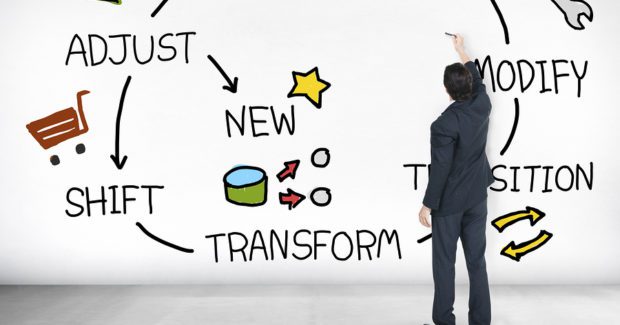Strategic Changes for Closing More Sales
What we first learn in our early training indelibly sticks with us for guidance. But new demands and expectations call for different ways to keep up and stay relevant. Here are five changes to consider.
Posted: June 28, 2018
For most of us, what we learn first sticks with us for a long time, often throughout our lives. Nursery rhymes, along with what we consider right and wrong. The acorn doesn’t fall far from the tree. It happens to salespeople, too. Because our early training is indelible, it stays with us to guide us. But new demands and expectations call for strategic changes to keep up, stay relevant and close more sales. Here are five of them:
CHANGE YOUR THINKING ABOUT WHAT YOU KNOW
Salespeople are known for being sure (sometimes overly sure) of themselves. Although it takes self-confidence to keep going, it also has a risky downside. It can lead to believing we know more than we do. And nothing kills sales faster than arrogance. A website designer’s creativity gave him an initial edge with a prospective client. In spite of his obvious talent, he lost the job. His presentation was his downfall. It was obvious he had not taken the time to understand the organization or its services. He was so focused on what he was selling, he didn’t have a clue as to what his prospect wanted to buy. In other words, he didn’t know what he didn’t know. Unless salespeople consciously challenge their thinking, they hand sales to the competition. We all benefit by asking ourselves these questions: What am I missing? What don’t I know? Are my assumptions correct?
CHANGE THE WAY YOU PREPARE PRESENTATIONS
Do you think you’re at a place where you can “wing it” or all you need to do to get ready for a presentation is to make a few notes, a quick outline, or go over it in your mind? If so, you’re deluding yourself and short changing your employer and your customers. You may be good, but you’re not that good. Like it or not, here’s the truth: If we don’t write it, we only think we know it.
This is what happened to the arguably brilliant Hillbilly Elegy author J.D. Vance when he went for job interviews at a prestigious Washington, D.C. law firm while at Yale Law School. “The last interviewer asked me a question I was unprepared to answer: Why did I want to work at a law firm? It was a softball, but I’d gotten so used to talking about my budding interest in antitrust litigation . . . that I was laughably unprepared. I should have said something about learning from the best or working on high-stakes litigation. I should have said anything other than what came out of my mouth: “I don’t really know, but the pay isn’t bad! Ha ha.” The interviewer looked at me like I had three eyes, and the conversation never recovered.”
It happens when to us all when we’re under pressure. We lose control and “default” to whatever comes to mind. Before we know it, we’re talking jibberish. And, like J.D. Vance, we can believe why we did it. It happens when we don’t prepare; when we don’t write it down.
CHANGE THE WAY YOU PRESENT
While presentations may have several objectives, they all have one overriding goal: engaging the participants. Unless that happens, a presentation may be interesting and informative, but it’s not a home run. Something is missing. For a presentation to be a winner, it must be interactive – participatory. To invite the participants to interrupt you by raising their hand to ask a question and then to pick up the thread and continue takes confidence. But it also sends the message that the participants shape the presentation. This may sound dangerous, but it’s well worth the risk.
CHANGE YOUR PERSUASION STRATEGY
There are still salespeople who say, “If I can just get in front of prospects, that’s all I need to close them.” If you want to give it a name, call it “the power of persuasion.” They build their case in a way that leads prospects to the logical conclusion that their only reasonable response is saying yes. Such a sales strategy is still popular, but more and more of today’s consumers and business buyers don’t buy it. They push back, feeling they’re being “set up,” “manipulated,” or “pushed.” Today, push is out; pull is in. To influence buying behavior today takes a sales environment in which customers can decide if they want to do business with you. It’s one that gives them the opportunity to find out if they can trust you, if your messaging makes sense, and if you are reliable and responsive.
CHANGE HOW YOU RELATE TO CUSTOMERS
Even though companies continue preaching a customer loyalty message, they may be deceiving themselves. For example, Accenture’s research indicates that 99 percent of retailers claim their loyalty programs perform at or above expectations, even though 71 percent of shoppers argue that such program do not result in loyalty. The trend is toward “tentative” or quid pro quo loyalty. “As long as you give me what I want, I’ll be loyal. If that changes, so will I.” This is the message. “These days, more and more consumers see their relationships with companies as an open marriage,” say authors Itamar Simonson and Emmanuel Rosen in their book, Absolute Value.
Clearly, performance-based relationships are taking over. What counts now are consistently good customer experience, convenience, an easy payment process, new and innovative products, customer service (phone, in-person or online, according to a Blackhawk Network study. Even if they are an Amazon Prime customer paying $99 a year, customers don’t think twice about buying it for less elsewhere, particularly if there’s free delivery. Clearly, performance-based relationships trump everything, including loyalty.
They say change is inevitable. If it’s true, then there’s no better place to start than with ourselves.
















